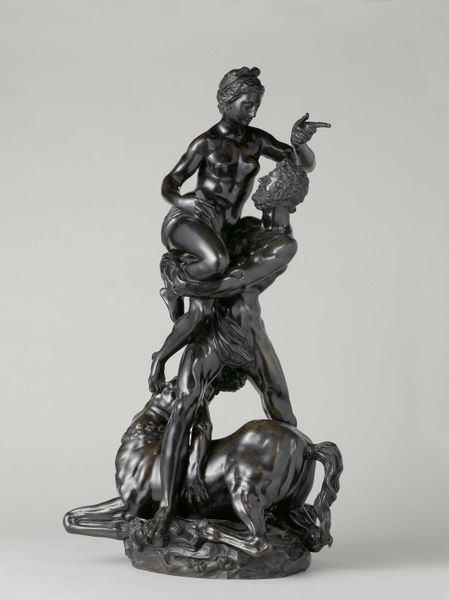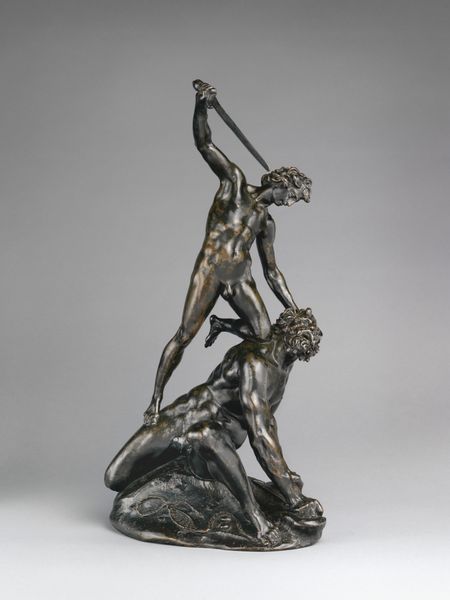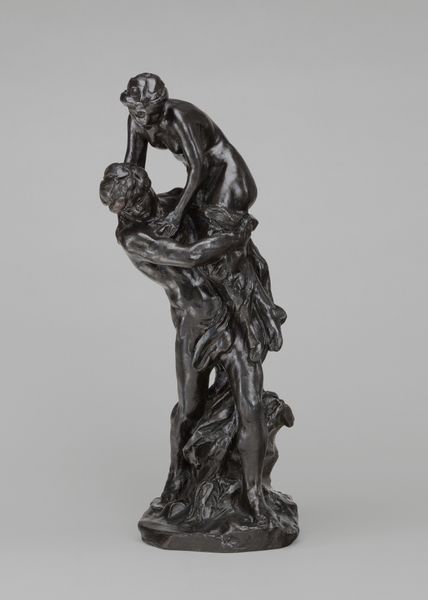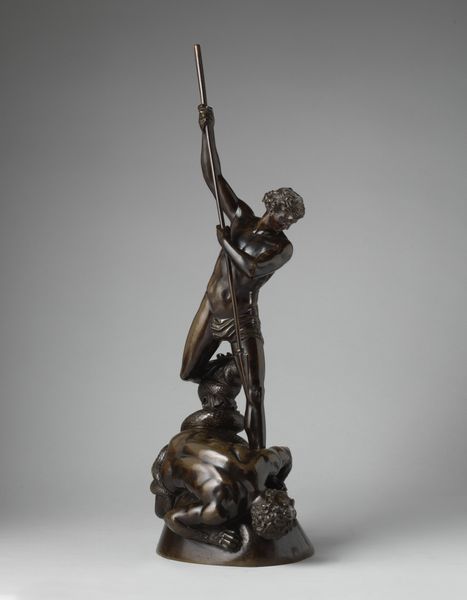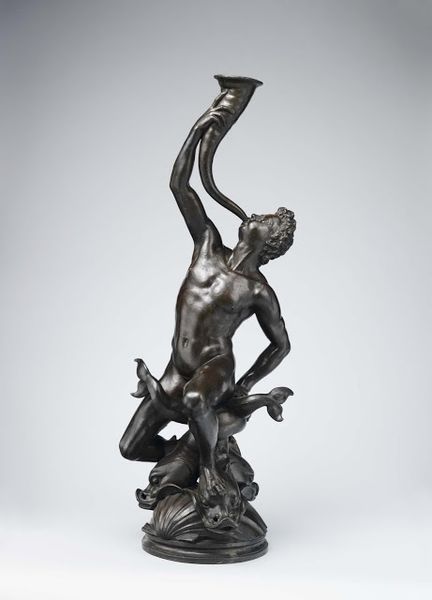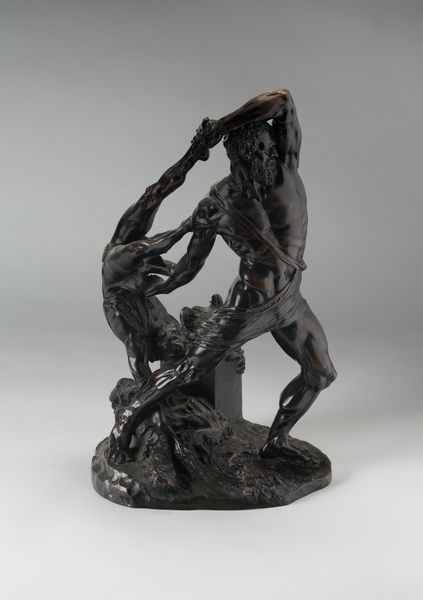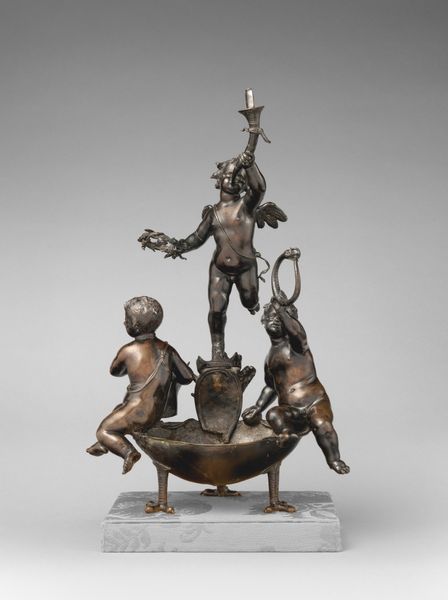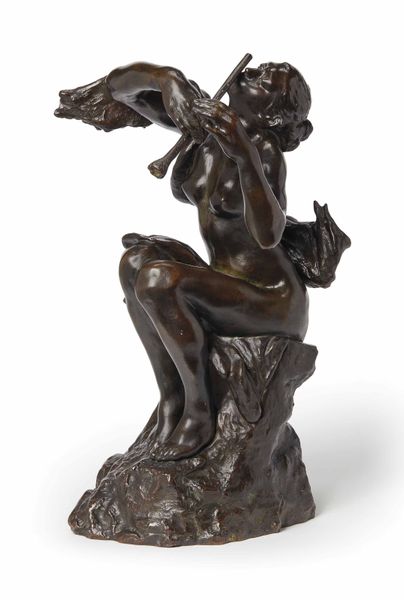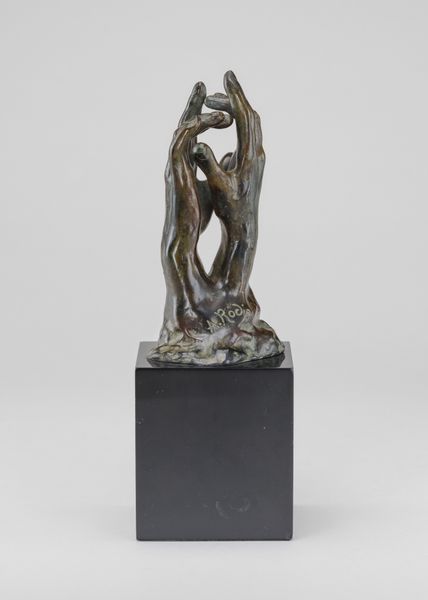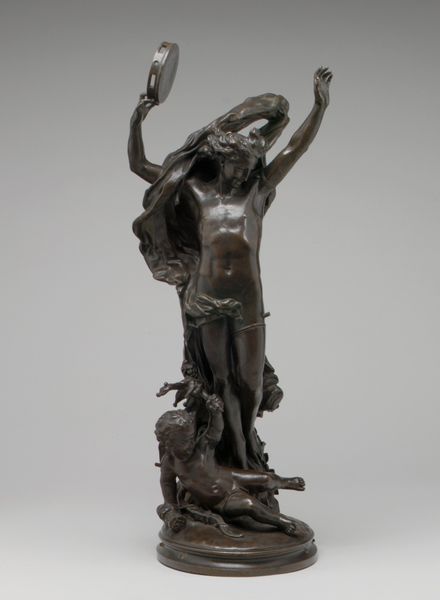
metal, bronze, sculpture
#
metal
#
stone
#
sculpture
#
bronze
#
mannerism
#
figuration
#
sculpting
#
geometric
#
sculpture
#
history-painting
#
statue
Dimensions: height 52 cm, width 36.5 cm, depth 31 cm, weight 12.4 kg
Copyright: Rijks Museum: Open Domain
Editor: Here we have Giambologna's bronze sculpture, Hercules Slaying the Centaur Eurytion, created sometime between 1600 and 1650. The composition is just incredible, all this twisting motion captured in bronze! How do you interpret this work, especially within its historical context? Curator: This sculpture resonates deeply within its historical moment and continues to spark contemporary dialogues about power, masculinity, and the "civilizing" mission often projected onto figures like Hercules. Consider the story: Hercules defeats Eurytion for attempting to assault his host’s bride. Who is valorized here? What does it mean that a human figure is elevated, quite literally, over a hybrid creature associated with animalistic desires? Editor: It sounds like you're questioning the assumed "goodness" of Hercules, and interrogating the narrative a little bit. I always just saw it as a cool action scene, but it could be interpreted beyond the obvious violence, too. Curator: Precisely. These narratives were employed to solidify ideas around who wielded power, and over whom. Are the centaurs symbols of ‘otherness’ being brought into submission? We might think about how these artistic choices perpetuate—and naturalize—hierarchies based on gender, race, and class. What does it mean to repeatedly cast these stories in bronze, literally solidifying a particular viewpoint for posterity? Editor: So it’s less about the specific story and more about the overall message it sends about power and who gets to hold it. Curator: Exactly! Considering the social and political climate, Hercules becomes not just a mythological hero, but an embodiment of established authority and dominance. This sculpture acts as a potent reminder to analyze the underlying ideologies being promoted and sustained through art. What new thoughts do you have after that consideration? Editor: It makes you think about the stories we continue to tell and the values they reinforce. Thanks, that was incredibly enlightening! Curator: It's vital to maintain these discussions, bridging historical analysis with contemporary critique to create an ongoing, ever-evolving understanding.
Comments
rijksmuseum about 2 years ago
⋮
Giambologna, or Jean de Boulogne, was born in Douai (Dowaai), Flanders (now France). In 1550 he travelled to Italy, where he became the most influential sculptor of his time. He made the original model of this bronze statuette for Francesco I de’ Medici, Grand Duke of Tuscany, to be cast in silver. It was succeeded by countless versions in bronze, including this 17th-century variant by an unknown follower.
Join the conversation
Join millions of artists and users on Artera today and experience the ultimate creative platform.

